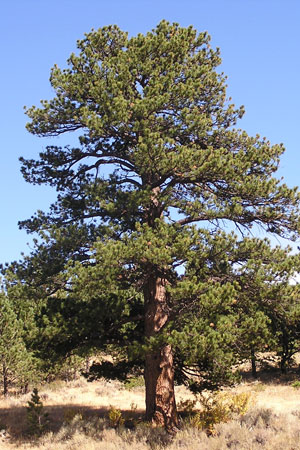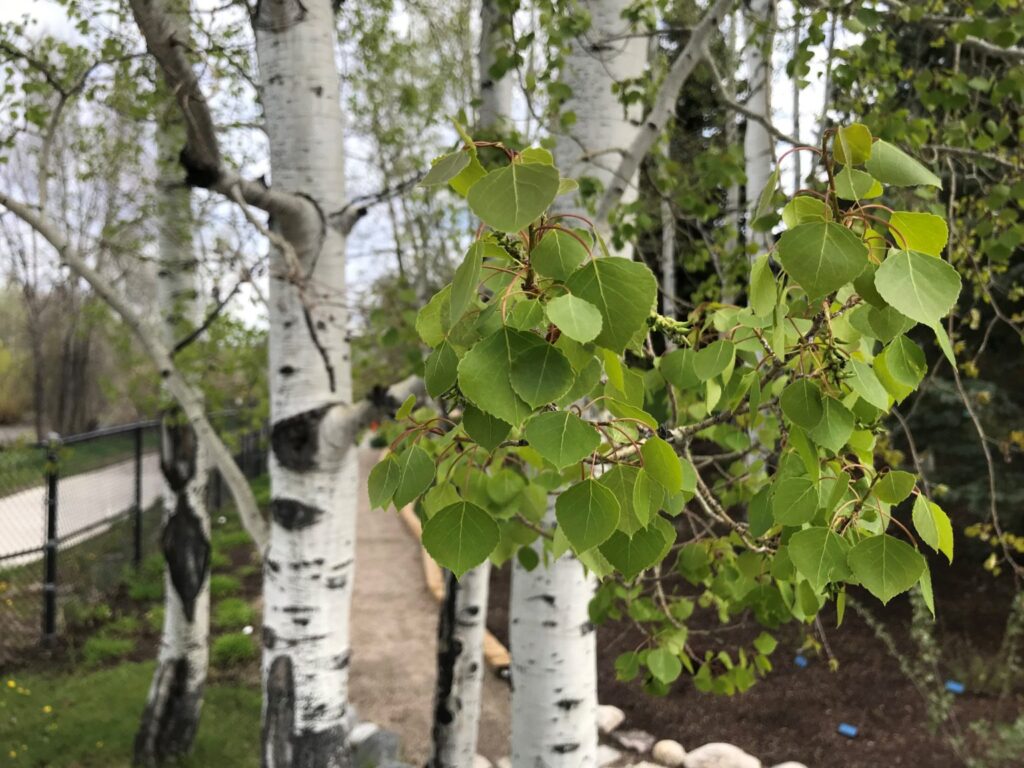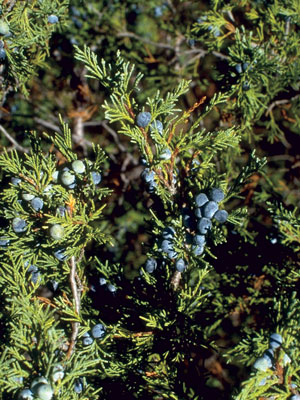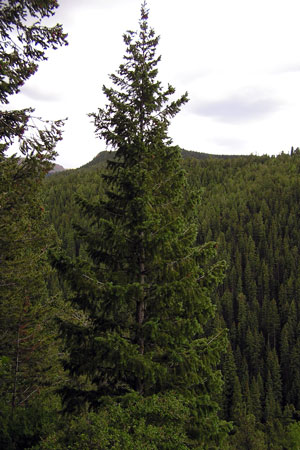Feel More Connected to Nature in Steamboat Springs
Nestled amidst the majestic Rocky Mountains, Steamboat is a haven for nature enthusiasts. From mountain biking through the Aspen groves in the summer to skiing down the side of breathtaking Mt. Werner in the winter, there is never a shortage of outdoor activities for the whole family to enjoy.
One of the most fascinating aspects of the area’s natural beauty is how well urban living and greenspace co-exist. There is a vast array of native trees in Steamboat Springs that add to the overall feeling of being one with nature. These towering giants play a crucial role in the ecosystem, providing habitat for wildlife, purifying the air, and contributing to the overall aesthetic appeal of the town.
The Resilient Ponderosa Pine

Another commonly found native tree in Steamboat Springs is the Ponderosa Pine (Pinus ponderosa). These tall, straight trees have distinctive yellow-orange bark and long, slender needles.
Ponderosa Pines are well-adapted to dry conditions and are often found in open forests and rocky slopes. The most interesting ability of these trees is their resistance to fire. This is due to the high moisture content in the leaves, thick bud scales, open crowns, self-pruning branches, and thick, insulating bark.
They provide habitat for a variety of wildlife including squirrels, chipmunks, and birds. Ponderosa Pine timber is also used for construction and other purposes.
The Radiant Aspen

One of the most iconic trees in Steamboat Springs is the Quaking Aspen (Populus tremuloides). They can grow up to 50 feet tall and are characterized by the heart-shaped, bright green leaves in the summer that turn to golden yellow in the Fall.
These trees are known for their shimmering leaves, which appear to tremble even in the slightest breeze. Aspens are found throughout the Rocky Mountains, including the higher elevations of Steamboat. They also produce a fruit called Catkins, which is a small capsule filled with cotton-like seeds.
These trees are easily destroyed by fire, but can send out many sucker soots, ready to repopulate the area.
They are a vital source of food for a variety of wildlife including deer, elk, beavers, and small mammals. Aspens also provide the perfect habitat for birds such as woodpeckers, nuthatches, and owls.
The Versatile Rocky Mountain Juniper

The Rocky Mountain Juniper (Juniperus scopulorum) is a smaller tree that is often found in high-elevation areas. These trees have a distinctive blue-green foliage and can live for thousands of years.
Junipers are important for wildlife, providing food and shelter for birds, small mammals, and insects. They produce juicy, blue-gray berries that are favorites of the local animals. The berries can also be part of your foraging excursion – they have been used for generations by Native Americans for natural healing purposes.
The Enduring Douglas-Fir

Douglas-firs (Pseudotsuga menziesii) are large, evergreen trees that are found in the higher elevations of Steamboat Springs. These trees have distinctive cone scales that resemble a mouse posterior or snake tongue.
These trees are not true firs. Their name honors the botanist David Douglas who first reported the species. Their genus name uses “pseudo” to describe that they are not a member of the fir family.
They provide habitat for a variety of wildlife, including squirrels, chipmunks, and birds. Douglas-Firs are an important source of timber and are also used for pulp and paper production.
Conservation Efforts in Steamboat Springs
While many of the native trees in Steamboat Springs are abundant, some species are facing threats due to factors such as climate change, habitat loss, and invasive species.
To address these challenges, several conservation efforts are underway.
- Habitat Restoration: Organizations are working to restore degraded habitats, including planting native trees and removing invasive species.
- Protected Areas: Steamboat Springs has several protected areas, such as parks and wilderness areas, that help to conserve the region’s natural resources.
- Public Education: Education programs are being implemented to raise awareness about the importance of native trees and the threats they face. You can also view many of these trees at the Yampa River Botanic Park and learn more on a guided tour of the gardens.
At The Astrid, we are committed to making our outdoor spaces a reflection of the natural landscape. In the green spaces we are going to use only the trees and plants that are native to Steamboat Springs. We love our home in this area and want to do our part to ensure its preservation for future generations to enjoy.
By working together, we can help to ensure that the native trees of Steamboat Springs continue to thrive. When you become a resident at The Astrid, you’ll take part in the conservation practices along with your neighbors and our team. It’s important to us to keep this magical destination as pristine as possible, we would love for you to join us.
The luxury you’ve been waiting for in Steamboat Springs is coming; we’re breaking ground on this ambitious project in 2025. To find out more, simply provide us with your name and email address. By doing so, you’ll be invited to join our exclusive mailing list. As part of this list, you’ll gain access to insider information, behind-the-scenes content, and a highly personalized email experience reserved only for members of The Astrid community.
